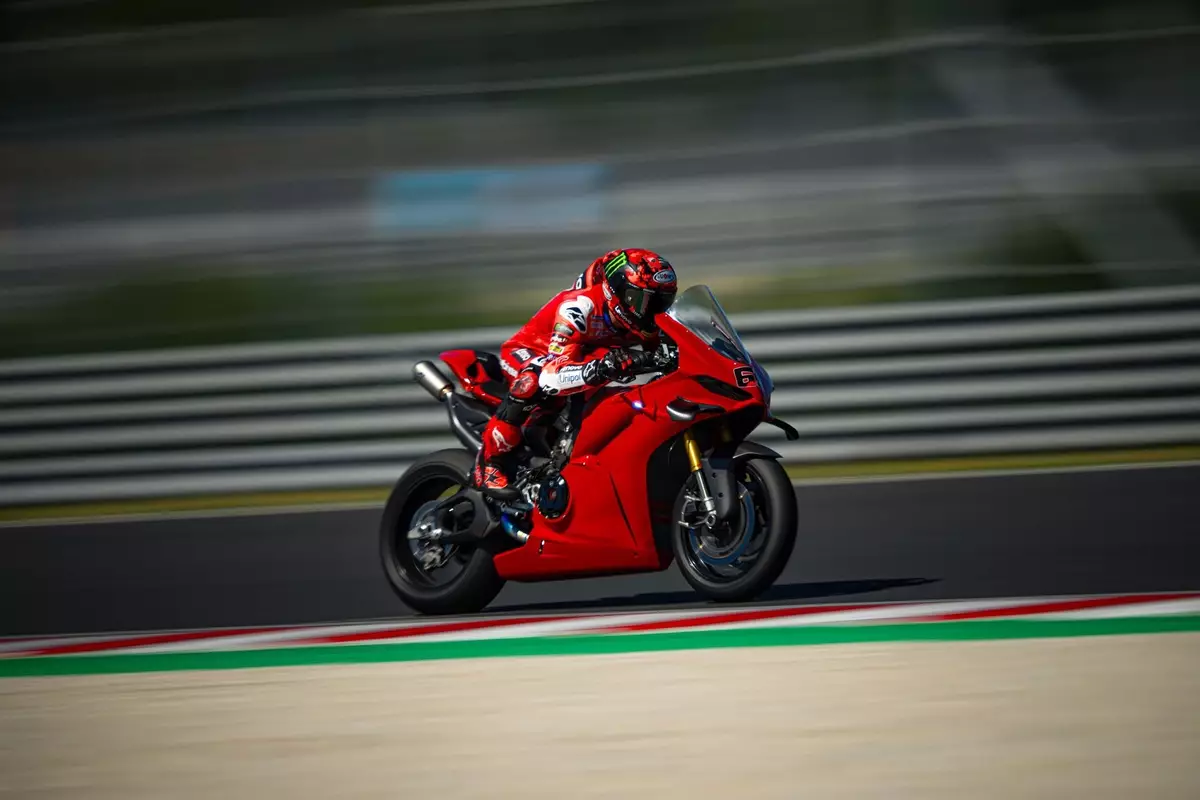Ducati’s recent move to send its premier Panigale V4 models to Hungary signals far more than a routine test; it epitomizes strategic foresight and relentless pursuit of excellence. While Ducati currently maintains an unassailable lead across riders’, teams’, and manufacturers’ standings, the Italian powerhouse refuses to rest on its laurels. Instead, it invests heavily in nuanced preparation, understanding that absolute dominance is rooted in meticulous planning and innovation. By introducing their sophisticated Panigale V4 S Pro at Hungary’s Balaton Park, Ducati aims to refine its existing advantages, knowing that the competition is never static but constantly evolving.
The decision to bring seven top-tier riders on this private track day reflects an extensive grasp of racecraft, engineering, and rider psychology. This isn’t mere practice; it’s a tactical move designed to optimize performance margins. The inclusion of professional riders such as Marc Marquez and Pecco Bagnaia—who are already legends in their own right—demonstrates Ducati’s understanding that leadership requires constant re-calibration, especially when faced with a brand-new challenge: a circuit making its debut on the MotoGP calendar. This preparation phase, therefore, is as much about gathering data as it is about reinforcing team cohesion and confidence.
Meticulous Engineering and Adaptive Tactics
Ducati’s commitment to excellence manifests in their tactical modifications to the Panigale V4 S Pro. Valued with extras worth over €10,000, these bikes are transformed into near-race machines within the constraints of homologation rules. Ducati’s technical team selectively enhances critical components such as brakes and suspension, fostering a high-performance environment that approaches the agility and precision of their MotoGP prototypes.
What stands out is the strategic balance Ducati maintains—applying advanced modifications without breaching regulations that prohibit overt racing components in private testing. This finesse ensures that insights gained are directly applicable to race scenarios, allowing Ducati’s engineers to refine their feedback loop continuously. The result is an ecosystem where engineering innovation is seamlessly intertwined with regulatory compliance, optimizing the entire racing apparatus.
Furthermore, Ducati’s riders enter the Balaton circuit with a clear mission—understand the nuances of a track that demands unique skills. The circuit’s characteristics, from its tight chicanes to rapid transition zones, incentivize rider adaptation, ultimately serving as a crucible for honing riding precision. The asphalt’s excellent condition simplifies the data collection process, enabling riders to focus purely on skill enhancement and rhythm development.
Riders as Pioneers of Technique
The riders’ feedback underscores a sophisticated understanding of the track’s demands, especially from seasoned veterans like Marc Marquez and Pecco Bagnaia. Their enthusiasm reflects an awareness that mastering this new venue can provide a competitive edge—lessons learned here could translate into a tangible advantage when MotoGP returns later this month.
Bagnaia’s comment about enjoying the process, even attempting to drift the Panigale V4, signifies a comprehensive approach to riding. It’s about understanding the bike’s behavior—not just pushing limits, but learning its personality and intricacies. Such insights are invaluable when transitioning from street-focused bikes to high-stakes MotoGP prototypes. A rider’s ability to adapt style to unfamiliar circuits is often the difference-maker in close championship battles.
Marquez’s remarks highlight the importance of rhythm and pace management on a track with a complex stop-and-go layout. His positive mindset demonstrates an adeptness at embracing change, which is crucial when tackling uncharted circuits. Both riders position themselves as pioneers—learning the terrain, pushing boundaries, and gathering intelligence that will later inform their race strategies.
The Significance of the Hungarian GP Revival
The return of the Hungarian Grand Prix after a 33-year hiatus is noteworthy—not only for its historical significance but also for the strategic opportunities it offers. The last time the event took place at Hungaroring, it marked a different era in motorcycle racing, and now, this new Balaton circuit promises to redefine the landscape.
Ducati’s proactive testing at Balaton signals a recognition that new venues can introduce unpredictable variables, which, if anticipated, can lead to decisive race advantages. The team’s deliberate effort to familiarize itself with the circuit underlines the importance of preparation in modern MotoGP—where milliseconds and subtle technical adjustments can determine the podium.
This circuit’s uniqueness demands a tailored approach from riders and engineers alike. Ducati’s comprehensive test stint exemplifies what it takes to stay ahead in a fiercely competitive environment. The small circuit demands agility, precision, and mental toughness, pushing every rider to their limits in an entirely new context.
Ultimately, Ducati’s investment underscores a fundamental truth in high-performance motorsport: victory favors the prepared. Their methodical approach to understanding the nuances of the Balaton track, from technical upgrades to rider adaptation, signifies a calculated push toward maintaining their championship supremacy. With the Hungarian GP looming, Ducati’s strategy transcends mere testing—it’s an assertion of dominance in evolving terrain, solidifying their status as maestros of precision engineering and relentless innovation.

